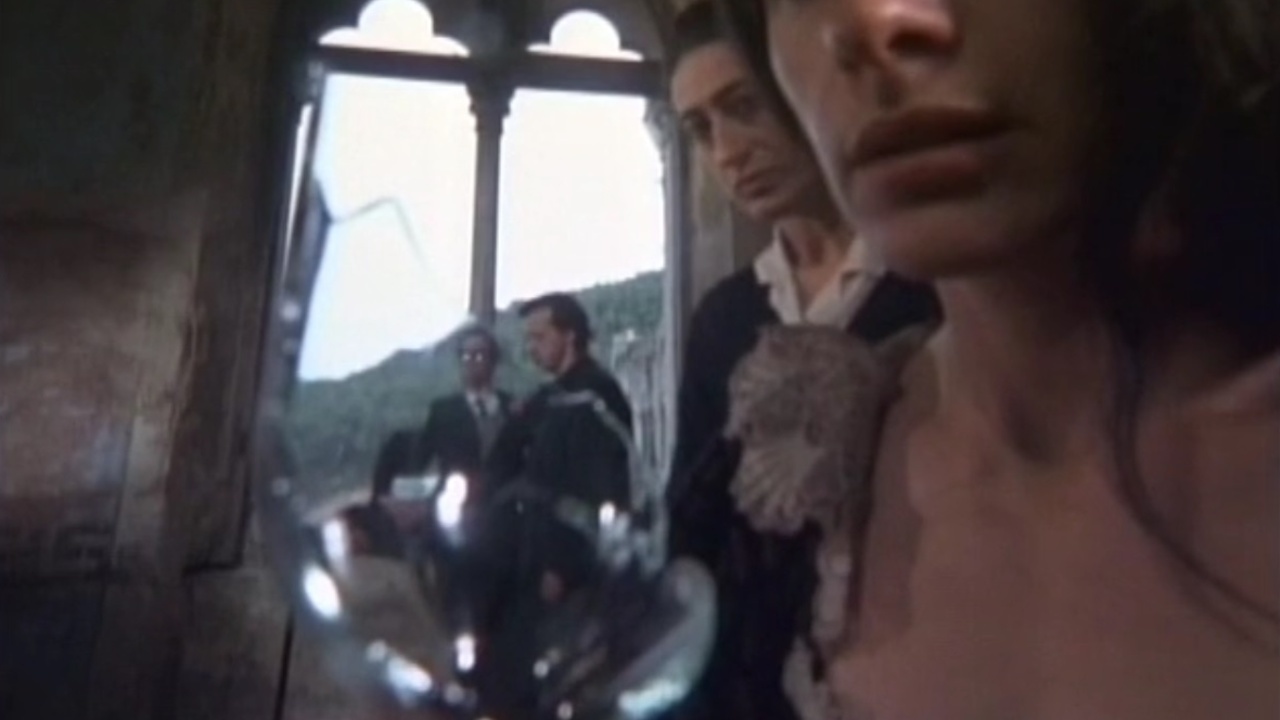CINEMATECA PORTUGUESA - MUSEU DO CINEMA
RAÚL RUIZ - THE SHATTERED IMAGE (PART III)
7/9/2024 - translated from the Portuguese by Y. Z.
7/9/2024 - translated from the Portuguese by Y. Z.
by Raúl Ruiz

In 1989, Raúl Ruiz writes and directs, in the Tuscan town of Buti, the spectacle Edipo Iperboreo, from which the film EDIPO is born, concluded only in 2004 by the Fondazione Pontedera Teatro. Thirty-four years later, in 2023, the text that originated the spectacle is published, for the first time, in a book entitled Edipo Hiperbóreo. Una antologia de fábulas sobre el exilio y la tirania. Starting from the manuscripts in French and Italian, preserved in the Ruiz-Sarmiento Archive, theatre director Elisa Chaim translated and reconstructed the text.
In her article Teatro desde el exilio. La escritura permeable de Raúl Ruiz, Chaim narrates the process through which she took contact with the dramatic writing of Ruiz, and the extensive investigative work and exploration which developed in his archive, until now disorganized and marked by the passage of time and the aging of the papers. In this archive, Chaim discovers a component of Ruiz’s artistic production that remains, even today, relatively unknown when compared to his work in cinema. Throughout many years, from his adolescence until the last years of his life, Ruiz produced, in constant form, various texts for the theatre: “all types of works. Plays of just one line, others of more than a hundred pages. Various versions of the same text. Many incomplete works. Written in different styles. Many texts of just one act, but also of two, three, of five. Radiotheatre. And innumerable sheets loose with notes and reflections on the same works, annotations or loose ideas” (Elisa Chaim). Between all of these documents, without any numbering or indexing whatsoever, Chaim discerns, however, a clear difference between the texts produced before and after the exile. The manuscripts reveal a profound relation with the author’s biography and his transformations, exploring, in the phase of exile in Paris, after the Coup d’État in Chile, his internal reality in this new condition of the exiled. This being the lesser known component in Ruiz’s artistic production, it is tempting to consider these manuscripts (the majority unedited) a sort of diary, or a space in which the internal dynamic of a displaced artist is inscribed.
Edipo Hiperbóreo, as the investigator points out, revolves around the theme of exile and of the incessant search for a place of refuge. The forced displacement generates a permanent tension between the sentiments of belonging and non-belonging: the necessity of the subject to open himself to a new culture, remaining, however, and inevitably, a foreigner, bound to his origins (to his national, cultural identity). In this oscillation - that which Chaim describes as a wound permanently opened by exile, that is, nevertheless, permeable to dialogues and exchanges - new relations are traced that defy pre-established limits and frontiers. Chaim underlines, as one of the main characteristics of Ruiz’s dramatic production during the period of exile, the form in which different languages and cultural universes are mixed, deconstructed, disorganized and combined without responding to any type of coherence. “It seems to me that it is possible to speak of a permeable writing that functions as a sponge, as it absorbs the different languages that roam around, and it also permits the welcome of random drifts in the moment, without thinking of logical correspondence” (Elisa Chaim). Also in EDIPO, the cultural references mix and confound themselves, defying historical narratives and, consequently, cultural, national and individual identities as watertight components. This “provocation” to narrative linearity, to historical “truths”, to cultural references, reflects the exchange process which occurs between the exiled individual and the space that shelters him, a constant exercise of negotiation and transformation.
In EDIPO, there is no shortage of the surrealism and the absurd that characterize Ruiz’s work, the desire to defy whatever type of coherence or linearity, the oneirism of the music or of the scenarios. In the cinematographic version of EDIPO, the notion of exchange also reflects itself in the crossing between different artistic disciplines, blending the aesthetics and mechanisms of theatre, of painting and of cinema. It is through the camera that we wander slowly, like an extension of an attentive eye, through the twenty frames of a mysterious painter; live frames, interpreted on a scenic stage, immortalized by cinema, in which the mechanisms of the medium are explored to the maximum, so as to recreate the language and aesthetic of painting - the light, the contrast, the color.
EDIPO is an example of the transversality of Ruiz’s work: it highlights the impact of his exiled condition in his experience of the world and in his work, revealing still the way which the author embraces artistic creation and fruition, in a constant crossing that defies any logic, searching for an opening to dialogue, to exchange and to the construction of new realities.
Sara Oliveira Duarte